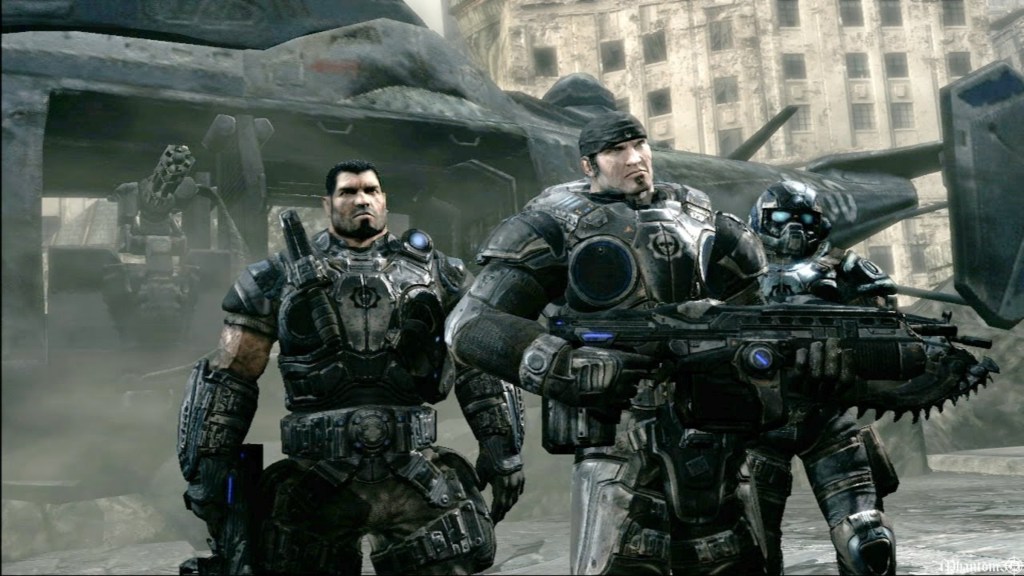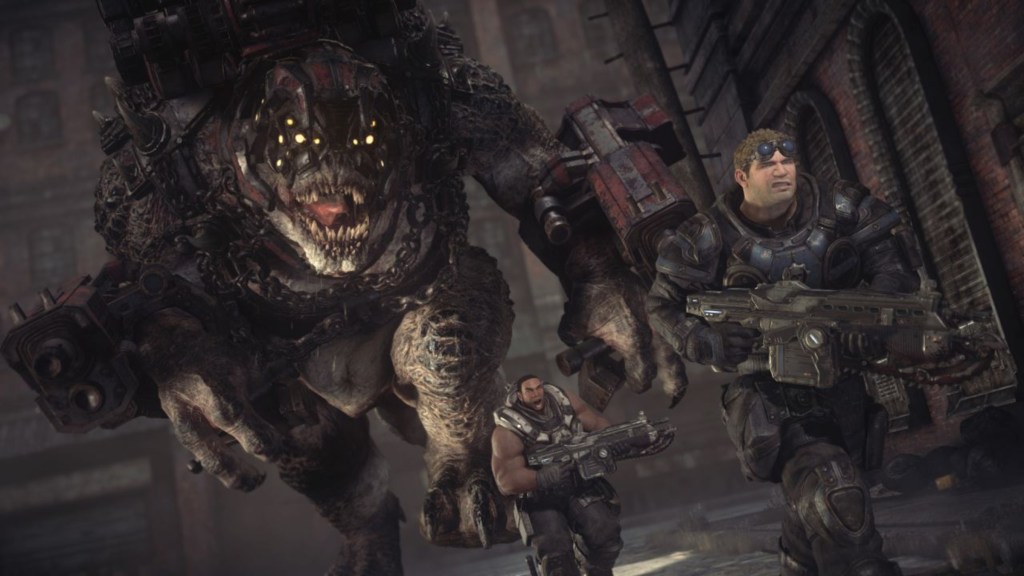The Xbox has always benefited from the concept of a killer app. Games like Halo were exclusive on the Xbox, helping transform the console competitor into a genuine success for Microsoft during the console wars. That’s partly what makes it so strange to see announcements about those former exclusives making the move to rivals like the PlayStation 5.
Videos by ComicBook.com
While Halo will always stand out as the Xbox property, its true successor has a pretty impressive legacy of its own. Released 19 years ago today, this refinement of the shooter genre showcased the true technical potential of the Xbox 360 and quickly became one of the biggest things in gaming. It even unseated Halo 2 on Xbox Live, proving that the franchise could be overtaken. Here’s how Gears of War rode a wave of success and fandom to become the true heir to Halo‘s shooter crown.
Getting The Gears Running

Debuting 19 years ago today, Gears of War was the true successor to Halo’s status as the Xbox’s breakout hit. Initially conceived of as a multiplayer title that would fit alongside Epic Games’ Unreal Tournament series, a lengthy development cycle led to the game being retooled into a single-player game. Taking influence from several different gameplay styles like Resident Evil 4’s over-the-shoulder third-person focus, the tactical-cover system from Kill Switch, and The Legend of Zelda’s acquisition of tools over the course of the adventure, Gears of War has a quietly important role in the history of the Xbox.
It was a demo of the game’s potential with the Unreal Engine 3 that convinced Microsoft to double the internal memory in the Xbox 360. While this cost millions of dollars up front, it allowed the Xbox 360 to run games at 720p, a major advancement in console potential at the time. Earning high praise from critics when it launched, with the harsh critics noting the gameplay similarities to previous titles but highlighting the slick presentation and impressive execution.
Like Halo, Gears of War focused on a conflict between a hardened human army and an invasive species hell-bent on their destruction. Whereas Halo embraced a brightly colored approach to the sci-fi concept, Gears of War went the other way and adopted a gritty visual style that reflected the overall grimy roughness of war. Focusing on Marcus Fenix and his allies in the fight against the Locust on the planet of Sera, Gears of War gradually revealed a more epic story.
Why Gears Of War Was So Much Fun To Play

What made Gears of War stand out was the way it embraced a number of gameplay mechanics and fused them together into a genuinely unique experience. Reloading was almost a rhythm mini-game, requiring precise timing for a better result. Taking cover and running around the battlefield had elements of real-time strategy, forcing players to adjust their attacks on the fly.
The over-the-shoulder camera encouraged bursts of action, with the character’s physical state clearly in view of the player, to add visceral shots of the characters going down in a blaze of glory. Brutal executions and chainsaw duels took a page from Mortal Kombat‘s book, displaying massive amounts of gore in sudden moments. All of this bolstered the standard run-and-gun tactics of any shooter.
Coupled with a genuinely dramatic story and compelling world, Gears of War feels like the ultimate synthesis of several gameplay mechanics and styles coming into effect together. Amid a sea of Halo clones that sought to replicate the massive success of that series by repeating the same general gameplay, Gears of War leaned more into a strategic and brutal approach to the shooter genre. It was a gamble, risking that the game’s overload of mechanics wouldn’t overwhelm players. Thanks to the game’s tight design, the gameplay proved quick to learn and fun to master. It may not have reinvented the wheel, but Gears of War had a lot of fun adding to it.
The Broad Gaming Audience Turned Gears Of War Into A Massive Hit

Calling Gears of War a success would be a vast understatement. Riding the wave of good reviews and with impressive visuals that helped justify the upgrade to the Xbox 360 in the minds of gamers, Gears of War became the most popular title on Xbox Live, finally unseating Halo 2 from the top spot. It sold over three million copies in ten weeks. Notably, it wasn’t just a success in America.
Gears of War earned “Double Platinum” status in the United Kingdom, while it became the first Xbox game to sell out in Japan. The popularity of the title even helped propel Gary Jules’ rendition of “Mad World” to the top of the music charts off the strength of the game’s promotional trailer. This is what underscores the true value of Gears of War as the true successor to Halo.
Gears of War took a formula that worked and turned it into its own, and that helped elevate it in the minds and hearts of gamers. It established a bleak tone that felt genuinely grimmer and more emotionally impactful than the more standard “heroic humans vs. evil aliens” subplot of the Halo series. It spawned an entire franchise of games, as well as tie-in media. Gears of War became a hit because it knew how to appeal to a broad audience, and it knew the importance of doing that with style.








